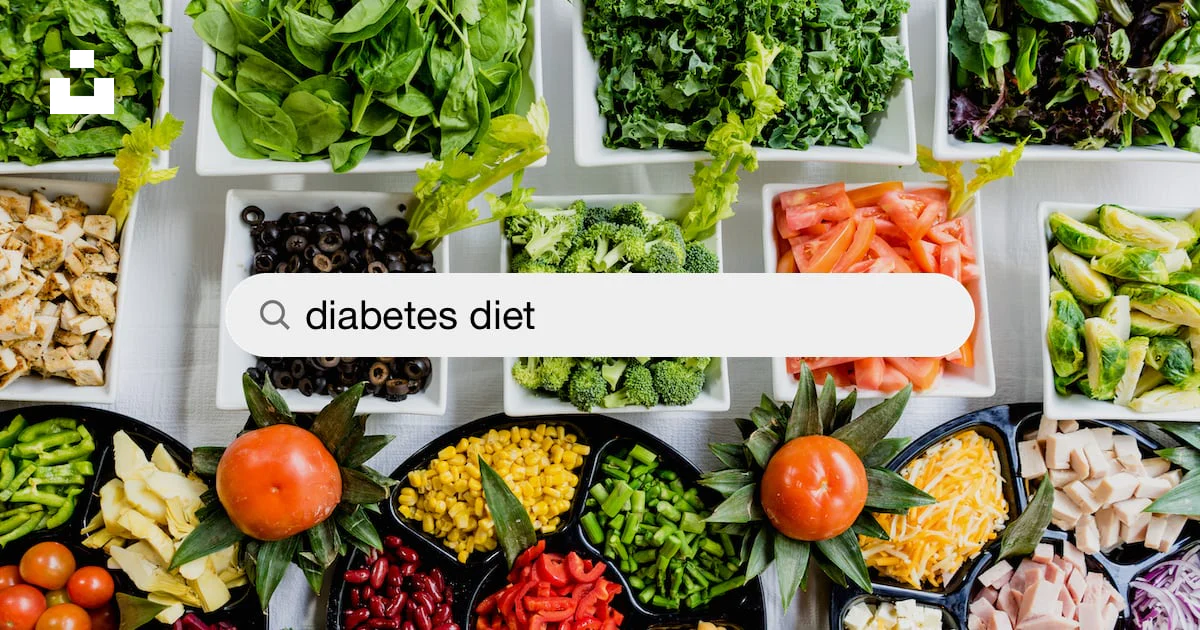
Making Your New Year’s Fitness Resolutions Stick: Expert Tips and Strategies
Making Your New Year’s Fitness Resolutions Stick: Expert Tips and Strategies Introduction: The Challenge of Sticking to New Year’s Fitness Resolutions As the New Year

Living with diabetes requires a proactive approach to managing blood sugar levels, and nutrition plays a crucial role in this process. By following a healthy meal plan and engaging in regular physical activity, individuals with diabetes can effectively control their blood glucose levels and improve their overall health. This comprehensive guide will provide you with valuable insights and practical tips on how to eat well as a diabetic, focusing on the best foods to incorporate into your diet and the importance of making nutrition a lifestyle choice.
Before delving into the specifics of diabetic nutrition, it’s essential to understand what diabetes is and the different types that exist. Diabetes is a chronic condition characterized by elevated blood glucose levels. The two primary types are Type 1 diabetes and Type 2 diabetes.
Type 1 diabetes occurs when the body’s immune system mistakenly attacks and destroys the insulin-producing cells in the pancreas. As a result, individuals with Type 1 diabetes require insulin injections or the use of an insulin pump to manage their blood sugar levels.
Type 2 diabetes is the most common form of diabetes, accounting for approximately 90% of all cases. It occurs when the body becomes resistant to insulin or does not produce enough insulin to regulate blood sugar effectively. Type 2 diabetes is closely associated with lifestyle factors such as poor diet, sedentary behavior, and obesity.
In both types of diabetes, maintaining a healthy diet is critical to managing blood sugar levels and preventing complications. Proper nutrition helps individuals with diabetes achieve target blood glucose, blood pressure, and cholesterol levels. It also promotes weight management, reduces the risk of diabetes-related complications, and enhances overall well-being.
Creating a well-balanced meal plan is the foundation of managing diabetes effectively. A diabetes meal plan is designed to regulate blood sugar levels by controlling the intake of carbohydrates, balancing with proteins and healthy fats, and promoting portion control. Working with a healthcare professional, such as a dietitian or diabetes educator, can help you develop a personalized meal plan that suits your specific needs and preferences. Here are some key components to consider when building your diabetes meal plan:
The plate method is a simple and effective tool to help individuals with diabetes control portion sizes and balance their meals. It involves dividing your plate into specific proportions of different food groups:
The plate method ensures a balanced distribution of nutrients and helps control calorie intake, promoting stable blood sugar levels and weight management.
Carbohydrate counting is a valuable technique for individuals who require insulin or medications to manage their blood sugar levels. By tracking the number of carbohydrates consumed, it becomes easier to determine the appropriate insulin dosage and maintain stable blood glucose levels. Here are the key steps to carbohydrate counting:
Carbohydrate counting allows for flexibility in meal planning while still maintaining blood sugar control.
The glycemic index (GI) is a scale that ranks carbohydrate-containing foods based on their impact on blood sugar levels. Foods with a high GI value cause a rapid spike in blood sugar, while those with a low GI value have a more gradual effect. Choosing low-GI foods can help individuals with diabetes maintain stable blood glucose levels. Here are some examples of low-GI foods to include in your meal plan:
By incorporating low-GI foods into your diet, you can better regulate your blood sugar levels and maintain optimal health.
Contrary to popular belief, not all fats are detrimental to individuals with diabetes. In fact, incorporating healthy fats into your diet can provide numerous health benefits. Healthy fats, such as monounsaturated and polyunsaturated fats, contribute to heart health, reduce inflammation, and help manage blood sugar levels. Here are some excellent sources of healthy fats:
By choosing healthy fats over saturated and trans fats, individuals with diabetes can improve their lipid profile and reduce the risk of cardiovascular complications.
Staying properly hydrated is crucial for everyone, including individuals with diabetes. Water helps maintain optimal bodily functions, regulates body temperature, aids digestion, and supports overall well-being. Furthermore, drinking water can help control blood sugar levels by preventing dehydration, which can lead to elevated blood glucose levels. Aim to drink at least eight cups of water per day and limit sugary beverages such as soda, juice, and energy drinks.
In addition to these key components, it is important to consider individual factors such as physical activity levels, medication use, and dietary restrictions when developing a diabetes meal plan. Consulting with a healthcare professional will ensure that your meal plan is tailored to your specific needs.
Now that we have discussed the fundamental principles of diabetic nutrition, let’s explore the best foods to include in your diet to manage blood sugar levels effectively and promote overall health.
Non-starchy vegetables are low in carbohydrates and calories, making them an excellent choice for individuals with diabetes. They are rich in vitamins, minerals, and dietary fiber, which aids in digestion and promotes satiety. Some examples of non-starchy vegetables include broccoli, spinach, cauliflower, bell peppers, zucchini, and asparagus. Incorporate a variety of non-starchy vegetables into your meals to maximize nutrient intake and add flavor and color to your plate.
Protein is an essential component of any healthy diet, and it plays a crucial role in managing blood sugar levels for individuals with diabetes. Lean sources of protein are low in saturated fat, which helps maintain heart health. Excellent choices for lean proteins include skinless chicken or turkey breast, fish such as salmon or trout, eggs, tofu, and legumes like lentils and chickpeas. Including lean proteins in your meals promotes satiety, stabilizes blood glucose levels, and supports muscle health.
Whole grains are an important source of fiber, vitamins, and minerals. Unlike refined grains, whole grains retain their bran, germ, and endosperm, making them rich in nutrients and providing a slower release of carbohydrates into the bloodstream. Examples of whole grains include brown rice, whole wheat bread and pasta, quinoa, oats, and barley. Incorporating whole grains into your diet helps regulate blood sugar levels, improves digestion, and supports heart health.
Fatty fish, such as salmon, mackerel, and sardines, are rich in omega-3 fatty acids. These healthy fats have been shown to reduce inflammation, improve insulin sensitivity, and lower the risk of heart disease. Including fatty fish in your diet two to three times a week can provide significant health benefits for individuals with diabetes.
Berries are low in calories and packed with antioxidants, vitamins, and minerals. They are also high in fiber, which slows down the absorption of sugar into the bloodstream. Berries such as blueberries, strawberries, raspberries, and blackberries are excellent choices for individuals with diabetes. They can be enjoyed as a snack, added to smoothies, or used as a topping for yogurt or whole grain cereal.
Nuts and seeds are nutrient-dense foods that provide healthy fats, fiber, and protein. They also have a low glycemic index, meaning they have a minimal impact on blood sugar levels. Almonds, walnuts, flaxseeds, chia seeds, and pumpkin seeds are great options for individuals with diabetes. Incorporating a small handful of nuts or seeds into your daily routine can provide a satisfying and nutritious snack.
Greek yogurt is a protein-rich food that also contains beneficial probiotics. It is lower in carbohydrates and higher in protein compared to regular yogurt, making it an excellent choice for individuals with diabetes. Greek yogurt can be enjoyed on its own, used as a base for smoothies, or added to sauces and dressings for a creamy and nutritious twist.
Nonfat or low-fat dairy products, such as milk and cheese, are excellent sources of calcium and protein. These dairy products provide essential nutrients while minimizing saturated fat intake. Incorporating nonfat or low-fat dairy products into your diet can support bone health and promote overall well-being.
For individuals with diabetes who desire sweetness without the added calories or impact on blood sugar levels, non-caloric sweeteners can be a suitable alternative. Non-caloric sweeteners like stevia, sucralose, and monk fruit extract can provide the sweetness you crave without affecting blood glucose levels. However, moderation is key, as excessive consumption of non-caloric sweeteners may have potential side effects.
Water is a vital component of any healthy diet, and it plays a crucial role in managing blood sugar levels for individuals with diabetes. Staying adequately hydrated supports optimal bodily functions, aids digestion, and helps regulate blood glucose levels. Aim to drink at least eight cups of water per day and limit sugary beverages such as soda, juice, and energy drinks.
While it’s important to focus on the best foods for diabetes management, it’s equally crucial to limit certain foods and beverages that can negatively impact blood sugar levels and overall health. Here are some items to minimize or avoid:
By limiting these foods and beverages, individuals with diabetes can maintain stable blood sugar levels and reduce the risk of associated complications.
To effectively manage diabetes, nutrition must become a lifestyle rather than a temporary fix. Here are some strategies to help you incorporate healthy eating habits into your daily routine:
Take time to plan your meals in advance and prepare them at home whenever possible. This allows for better control over portion sizes, ingredients, and cooking methods. Preparing meals in bulk and portioning them out can also save time and make healthy choices more convenient.
Practice mindful eating by paying attention to your hunger and fullness cues. Slow down while eating, savor each bite, and listen to your body’s signals of satisfaction. This can prevent overeating and promote a healthier relationship with food.
Combining proper nutrition with regular physical activity is essential for diabetes management. Engaging in exercises such as walking, cycling, swimming, or strength training helps regulate blood sugar levels, improves insulin sensitivity, and promotes overall fitness.
Stay informed about the latest research and recommendations regarding diabetes management and nutrition. Attend educational seminars, read reputable sources, and consult with healthcare professionals to stay up to date on best practices. Check out American Diabetes Association (diabetes.org)
Seek support from family, friends, or support groups to stay motivated and accountable. Surrounding yourself with individuals who understand and support your goals can make the journey towards better nutrition and diabetes management more enjoyable and successful.
Managing diabetes through proper nutrition is a lifelong commitment that can lead to improved health, stable blood sugar levels, and a better quality of life. By incorporating the best foods for diabetes, practicing portion control, and adopting a healthy lifestyle, individuals with diabetes can thrive and prevent complications. Remember, nutrition is not a one-size-fits-all approach, and working closely with healthcare professionals will help you develop a personalized meal plan that suits your individual needs and preferences. Take charge of your health and embrace the power of nutrition to combat diabetes and live a vibrant, fulfilling life.
Needing help with diabetic nutrition? PROfection Coaching can assist. Custom nutrition programming and custom training plan. Let’s make HEALTHY a lifestyle!

Making Your New Year’s Fitness Resolutions Stick: Expert Tips and Strategies Introduction: The Challenge of Sticking to New Year’s Fitness Resolutions As the New Year

Ultimate Guide to Diabetic Nutrition Living with diabetes requires a proactive approach to managing blood sugar levels, and nutrition plays a crucial role in this

Boost Your Performance with ASTROFLAV One Scoop Only Pre Workout: The Ultimate Pre Workout When it comes to maximizing your workout performance, a quality pre

Introduction to baking with protein powder As a fitness enthusiast and a lover of baked goods, I’m always on the lookout for ways

How to stand out in your next women’s bodybuilding competition. Bodybuilding competitions have been rapidly gaining popularity among women, and for good reason. They provide

Image Source: Parade Introduction When it comes to achieving weight loss goals, many women believe that cardiovascular exercise is the only way to go. However,